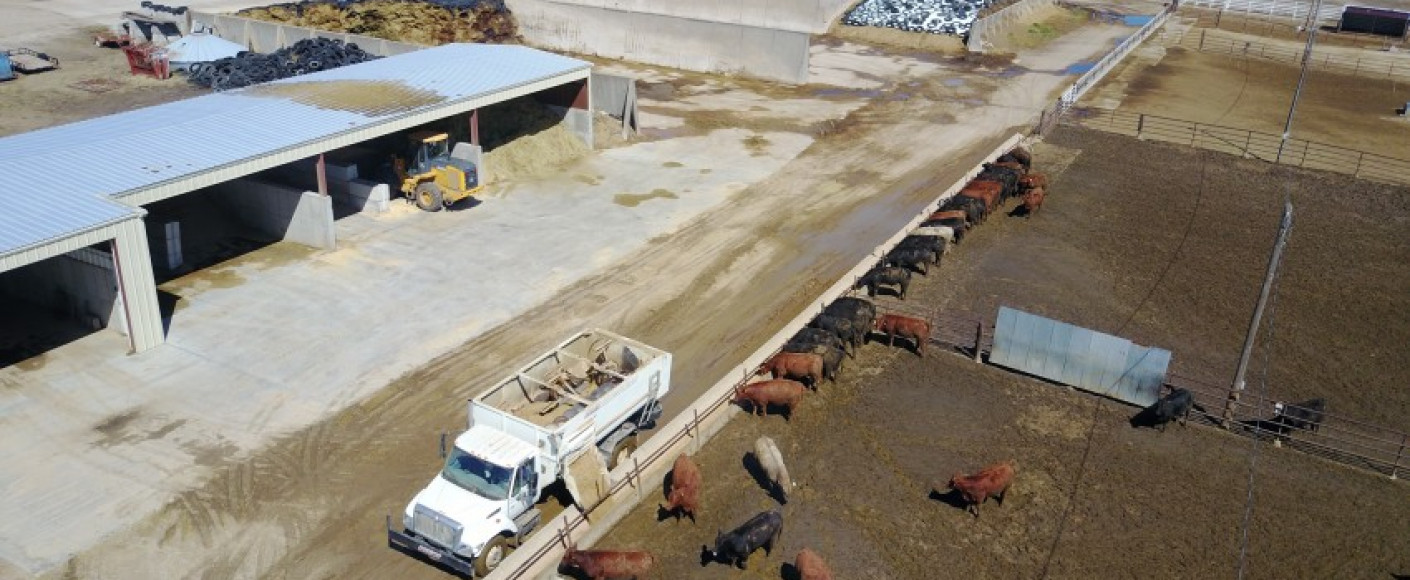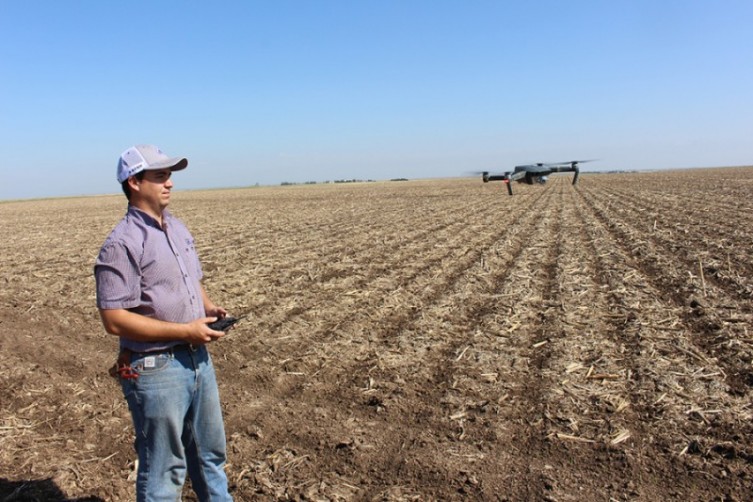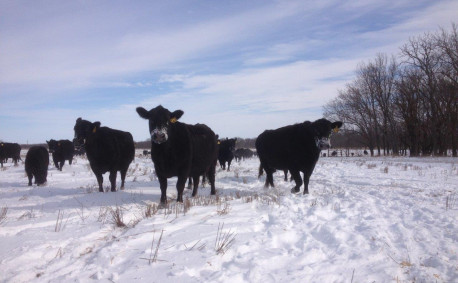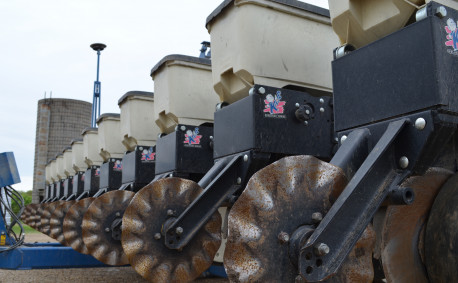Technology on the Farm: Spotlight on Drones
Farmers and ranchers take to the skies, using drones to improve efficiencies.
During the fall of 2016, Jeremiah Nicholson introduced drones to the family farm and ranch business. He’s part of a growing number of farmers who use what started as military aviation technology to help provide better livestock care and increase efficiencies in crop production.
The Nicholson family farm is nestled near Mulberry Creek approximately 10 miles south of Dodge City. The farm and ranch partnership, Nicholson Ventures, includes Chuck Nicholson, his sister DeKeta Schuckman, and Chuck’s daughter, Kamy, and son, Jeremiah.
Throughout four generations, the Nicholsons have grown wheat, milo (sorghum), alfalfa, corn and soybeans. They also run cattle on their southwestern Kansas operation.
Faced with a continuing decrease in farmland due to urban sprawl and an exploding world population, every day it becomes more important to do better with the cultivated crop and grassland that exists. UAVs — unmanned aerial vehicles piloted by remote control or onboard computers — may be a natural solution for increasing yield and quality of crop and livestock production.
The Nicholsons’ drone is simply an aerial camera platform — in this case, a small quadcopter (about 18 x 18 inches) with a high-resolution, point-and-shoot camera.
“If we can increase our efficiencies, produce more bushels and make better products while saving time and labor on our farm, we’re always up for using this technology,” Jeremiah says.
So far, they have used the drone primarily to check on the condition and whereabouts of their livestock. During winter and throughout the calving season, the drone has saved them tons of time, wear and tear on work vehicles, and, most importantly, livestock lives.
Instead of driving a pickup or four-wheeler across hundreds of acres of grass and through creeks and draws, Jeremiah can launch his drone, view the pastures and see all his cattle in real time.
“Putting our drone in the air allows me to sit in one spot and check on each cow and calf in a pasture,” he says. “I can count them, see if they look healthy, check for signs of a cow who needs help calving — all in a fraction of the time it used to take me to drive by and look at each one.”
With this drone technology, Jeremiah can position the drone within five feet of the cow. Now, that’s up-close-and-personal care!
Last winter during a horrific ice storm that blanketed his region of the state, he helped a friend with a cow who couldn’t deliver her calf. By putting the drone up in the air and pinpointing the cow’s location and condition, they knew exactly where to go to help the animal.
“We loaded up a calf puller, medical supplies and everything else we needed into backpacks and headed out across the pasture on foot,” Jeremiah recalls. “It was a long, cold night. But it was worth it. We saved the cow and calf.”
Another time-saving feature of the drone allows the Nicholsons to look at their livestock’s water sources to ensure stock tanks are full and wells are functioning properly.
Prior to the beginning of the irrigation season in early May, the Nicholsons fired up their wells and pivot irrigation systems. This procedure is done each year to ensure all the equipment operates in tip-top condition.
Pipes on each of their 32 systems are examined carefully for leaks. Nozzles receive the once-over to make sure none are plugged and each engine receives a thorough examination. Like every other application it’s used for, the UAV saves precious time driving slowly across the fields. Should a problem occur, a video can be taken and sent to the irrigation dealer for an exact diagnosis.
Drone technology ensures the Nicholsons can put eyes nearly anywhere above their crop fields and get detailed views. Seeing a crop from the air can reveal patterns that expose everything from irrigation problems to soil variation and even pest and fungal infestations that aren’t apparent at eye level.
“Successful crop farmers wind up spending money to make money because of the higher yield expectations of modern farming,” Jeremiah says. “To ensure we meet our goals, we incorporate fertilizer, water, herbicides and insecticides — but we use them right.”
Airborne cameras can also take images capturing data from the infrared as well as the visual spectrum. This creates a view of the crop that highlights differences between healthy and distressed plants in a way that can’t be seen with the naked eye.
Finally, a drone can survey a crop every week, every day, or even every hour, and combine images to create a time-series picture showing changes in the crop, including trouble spots or opportunities for better management.
“Looking at the crops with this technology allows me to see where the corn may be drying up a bit, and we can check to make sure the nozzles are flowing properly,” Jeremiah says. “Every way we can make a correction or solve a problem increases our opportunity for better yields by keeping our corn and other crops healthier longer. In doing so, it allows us to be able to feed a very hungry world.”
Agricultural drones are becoming a tool like other consumer devices. Additional applications will soon come down the pike. Who knows? What began as military technology may wind up known as a green-tech tool. Future generations may grow up with flying robots buzzing above farms like mini crop dusters.





